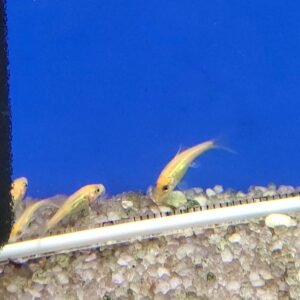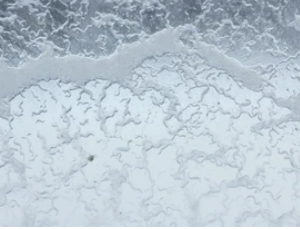Albino Brichardi Cichlid
₹400.00 Original price was: ₹400.00.₹350.00Current price is: ₹350.00.
A special pet!
Albino Brichardi Cichlid : The most common freshwater fish species belonging to the Cichlidae family is an Albino Brichardi Cichelid, also known as “Albino Princess of Burundi”. It is a variation of the Brichardi Cichlid colour, with its distinctive appearance making it very popular among aquarium enthusiasts.
Out of stock
Albino Brichardi Cichlid, (Albino Lyretail cichlid)also known as the “Albino Princess of Burundi,” is a popular freshwater fish species that belongs to the Cichlidae family. They are a color variation of the Brichardi Cichlid, and their unique appearance makes them highly sought after by aquarium enthusiasts.
These fish are native to Lake Tanganyika in East Africa and prefer a water pH of 7.8-8.6 and a temperature range of 76-82°F. They are omnivorous and should be fed a diet that includes a mix of both plant-based and protein-based foods. They are also known to be territorial and can be aggressive towards other fish of the same species or similar size, so it’s important to provide them with ample space and hiding places in the aquarium.
Albino Brichardi Cichlids are relatively easy to care for and make excellent additions to a community aquarium with other peaceful fish species. They can grow up to 3-4 inches in length and have a lifespan of 6-8 years when provided with proper care.
I. Size
- Average Adult Size: 3.5′
- Maximum Adult Size: 4′
- Swimming Level: all areas of the aquarium
II. You would love the fish because…
This species has a light earthy colored body, white tipped lyre formed balances, a dart stripe along the lower part of the gill with a yellow spot on the gill cover, blue eyes and a blue trim under the eyes.
The aquarium should have a sandy substrate with a lot of rocks and caves, a pH between 8.0 and 9.0, and water temperatures between 75.2 and 78.8 degrees Fahrenheit in order to keep this species in captivity
III. Is this fish species peaceful or hostile?
- Recommended: 1
- Overall friendliness : Peaceful
- Friendliness with own kind: Peaceful
- Friendliness with other species: Peaceful yet not so peaceful
IV. Species compatibility
- A large school of Herring cichlids
- Sardine Cichlid
- Cyprichromis leptosoma
- Goby CichlidsJu
- lidochromis
- Tropheus species.
V. How to feed this species?
These fish are omnivorous. They consume plankton and invertebrates in the biofilm of the substrate in the wild. Flake, pellet, live, and frozen foods can all be fed to them in an aquarium. The best diet would consist primarily of live or frozen foods, with occasional feedings of dried foods and vegetable matter.
Disclaimer for Live Aquarium Species
Disclaimer for Individual fish prices
| Weight | 1 kg |
|---|---|
| Dimensions | 15 × 20 × 30 cm |
| Family | Cichlidae |
| Scientific Name | Neolamprologus Brichardi |
| Tank size | 15 gal (57 L) |
| Special Diet | vegetable matter in the form of spirulina flakes, blanched spinach, nori etc |
| Native To | Lake Tanganyika |
| Care Level | Intermediate |
| Max water Temp | 78.8 °F |
| Min Water Temp | 75.2 °F |
| pH Max | 9.0 |
| pH Min | 8.0 |
Related products
Live Aquarium Fish
Live Aquarium Fish
Live Aquarium Fish
Live Aquarium Fish
Live Aquarium Fish
Live Aquarium Fish
Live Aquarium Fish
Live Aquarium Fish































